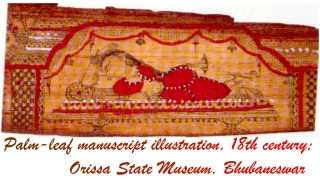World > India > Museums > Bhubaneshwar
The Orissa State Museum, Bhubaneshwar (**)

When Bhubaneshwar became the capital of Orissa, the museum was moved from Cuttack to its present location. the collection of the museum centres on the arts of the region. Orissa has one of India's oldest and most artistic traditions, ranging from Buddhism, Jainism to Hinduism, including the building of the magnificent temples of Bhubaneshwar and the Sun temple at Konarak in the 13th century. There are several galleries devoted to sculptures from these temples, though many would prefer to see the reliefs in situ, in the nearby temples themselves.
Like the temples at Kahajuraho in Madhya Pradesh, Tanjore (Thanjavur) in Tamil Nadu and Modera in Gujarat, those in Orissa reached their apogee between the 10th and the 13th centuries. Sculpture works of fine quality and restrained ornamentation were prepared to adorn parts of the temple. The sculptured panels of musicians, elephants and deities such as Mahishasuramardini are noteworthy.
The museum is also well known for its vast collection of palm leaf manuscripts. Palm leaves were dried, and with a stylus the writing was incised into the leaf. It is said that the script of Oriya has a predominance of rounded letters, formed from writing on palm leaves which would have split if the letters had been too angular in relation to the horizontal line of the leaf. The leaves were then blackened with charcoal and wiped so that the incised letters stood out in black. There are several painted and incised drawings and illustrations on the manuscripts. These paintings, like the stone sculpture, follow a style that is particular to Orissa. Well developed figures, wearing heavy jewellery and patterned clothing are depicted in the scenes. Elaborate hairstyle, plaited braids with jewels, long earrings and long accentuated eyes are characteristic features of this style. the details of the scenery in these paintings are quite remarkable - a tree signifies a forest, a flowering bush, a garden, a few waves with lotuses symbolise a pond. Architectural structures are included to depict houses, places and jungle hamlets. The sky is strewn with flowers when the occasion is auspicious.
One of the earliest palm-leaf manuscripts (1690) is of the Gita Govinda, a Devotinal poem written by Jayadeva in the 12th century. the painting is in primary colours : red, yellow and blue, with shades of green.
This manuscript has 80 folios, with drawings on both sides. The museum's copy is signed by the artist Dhananjaya. There is a translation of one verse from the Gita Govinda that speaks of Radha's longing for her divine lover Krishna :
She ornaments her limbs
when a leaf quivers or falls;
expecting Krishna's arrival,
she spread out the bed;
making her bed of ornaments and fantasies,
she evokes a hundred details of you;
she will not survive
tonight without you.
Here the artist, on this small scale, has attempted to convey universal concepts, ideas that could fill the world.
Orissa state Museum, Jaydev Marg, Bhubaneshwar.
Hours : 10 am-4 pm except on Mondays and Government holidays.
Admission : free.
Suggested Viewing time : One hour.

